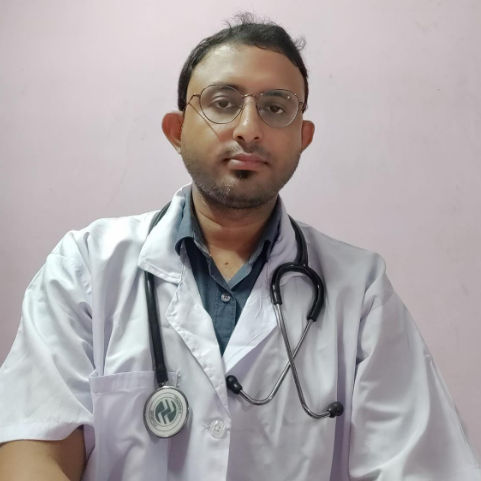The forehead is a prominent facial feature that plays a major role in an individual’s overall appearance and self-confidence. A clear forehead can contribute to a positive self-image, while forehead acne is generally unpleasant and may impact self-esteem.
Forehead acne, though often considered a minor skin issue, can cause physical and emotional distress. Severe cases may even interfere with day-to-day interactions. This guide delves into the various aspects of forehead acne, including its symptoms, potential causes, home remedies, and available treatments.
What is Forehead Acne?
Forehead acne is a skin condition that refers to the presence of acne or pimples on the forehead. Forehead acne occurs when tiny hair follicles beneath your skin get clogged with sebum, dead skin cells, and keratinocytes (a type of cell that lines the hair follicles).
This combination lets the bacteria that usually exist on your skin thrive in the blocked hair follicles to form inflamed bumps (acne or pimples) on the forehead and other places on your face. Forehead acne can range from mild breakout to inflamed lesions, depending on the degree of severity.
Causes of Forehead Acne
Forehead acne is a result of the pores becoming clogged due to the buildup of sebum and dead skin cells. However, multiple factors can influence the clogging of pores. Most of those factors are described in detail below:
Excess Sebum Production
Natural oils are necessary for skin hydration. Sebum is an oil secreted by the sebaceous glands that keeps the skin moisturised and hydrated. However, overactive sebaceous glands produce too much sebum, clogging our pores and increasing the risk of acne.
Poor Hygiene
Frequent touching of the forehead with unwashed hands or improper washing of the face can transfer dirt, bacteria and oils to the skin, increasing the chances of acne.
Hormonal Changes
Hormonal fluctuations can also increase the risk of acne. Significant changes in hormone levels during puberty, menstrual cycle, pregnancy, or stress can stimulate the sebaceous glands to release excess sebum.
Hair and Hair Products
Heavy hair care products like gels, sprays, and conditioners or oily hair can clog forehead pores and lead to breakouts. This is sometimes called “pomade acne.”
Diet and Lifestyle
Eating too much sugar, dairy, or processed food can exacerbate acne. Forehead acne can also be caused by lack of sleep, stress, and dehydration.
Skincare Products
Using comedogenic (pore-clogging) products or not properly taking off make-up can also clog pores and lead to acne.
How to Treat Forehead Acne
Treatment for forehead acne usually involves a multi-pronged strategy. Treatment can include the application of topical ointments, OTC medications, and medical treatments. The treatment approach can also involve modifications to diet, lifestyle and home remedies.
Over-the-Counter (OTC) Treatments
Benzoyl Peroxide: Kills bacteria that lead to pimples and reduces swelling.
Salicylic Acid: Helps remove dead skin cells and unclogs your pores.
Niacinamide: Calms inflammation and controls oil production.
Adapalene: A topical retinoid that increases skin cell turnover.
Medical Treatments
Topical Antibiotics: Clindamycin and erythromycin work against stubborn acne-causing bacteria, curtailing inflammation, and redness.
Oral Medications: These involve isotretinoin, hormonal treatments (such as oral contraceptives), and antibiotics used to control more severe forms of acne.
Dermabrasion: A dermatologist-performed exfoliation technique that is known to enhance skin texture and reduce acne.
Skincare Routine
Gentle Cleansing: Use a mild cleanser to wash your face twice daily to remove excess oil and dirt.
Moisturising: Apply a light, non-comedogenic moisturiser to keep the skin hydrated.
Sunscreen: Use an oil-free sunscreen, as the sun’s harmful UV rays can darken acne scars.
Home Remedies
Tea Tree Oil: Possesses natural antibacterial properties that may help fight acne.
Aloe Vera: Calms inflammation and heals.
Honey-and-Cinnamon Mask: Has antimicrobial properties and soothes irritated skin.
Lifestyle Adjustments
Besides topical treatments, incorporating certain lifestyle habits can help prevent or ease acne on your forehead. Steer clear of tight hats or headbands that hold sweat and oil against your skin. Cleaning your mobile phone regularly and not resting your forehead on your hands can also help.
Preventing Forehead Acne
There are certain proven steps that you can follow to avoid forehead acne. Some of those are detailed below:
Maintain Good Hygiene
Don’t touch your face without washing your hands.
Regularly wash your hair to avoid oil accumulation.
Use clean pillowcases and face towels.
Select Appropriate Skincare Products
Choose oil-free and non-comedogenic products
Don’t forget to remove makeup before going to bed.
Manage Stress
Stress is a major risk factor for acne, including that on the forehead. Practice relaxation techniques (yoga, meditation, and deep breathing) to lower stress levels to reduce the risk of acne flare-ups.
Stay Hydrated
Drinking water helps flush toxins and supports skin hydration.
Eat a Balanced Diet
Include plenty of fruits, vegetables, whole grains, and lean proteins in your diet.
Avoid intake of fried, sugary and processed food.
Protect Your Skin
Protect your forehead from sun exposure by wearing a hat or scarf.
Wear sunscreen of at least SPF 30, even on overcast or cloudy days.
Keep Your Environment Clean
Maintaining a clean environment prevents acne. Dust can get stuck inside your pores and cause breakouts. Keep your home clean and well-ventilated.
When to See a Dermatologist
If your forehead acne doesn’t respond to the above mentioned treatments and preventive measures, it’s time to see a dermatologist. Moreover, you should seek professional help if you have:
Severe or cystic acne
Painful or inflamed lesions
Hyperpigmentation after acne
Emotional distress or low self-esteem due to acne
A dermatologist will be able to evaluate your condition and suggest more effective options tailored to it, including prescription medication, laser treatment, or specialised skincare products.
Conclusion
Forehead acne, while common, can significantly impact both physical appearance and emotional well-being. Understanding its causes, symptoms, and treatments is crucial for effective management. By adopting a consistent skincare routine, maintaining good hygiene, making thoughtful dietary and lifestyle choices, and using appropriate treatments, you can prevent and manage forehead acne effectively. However, if your acne persists or becomes severe, consulting a dermatologist is essential to address underlying issues and explore advanced treatment options. With proper care and guidance, achieving clearer and healthier skin is possible.
Consult Top Dermatologists

Dr. Hemalatha Naidu M
Dermatologist
5 Years • MBBS, MD (Dermatology)
Bangalore
Apollo 24|7 Virtual Clinic - Karnataka, Bangalore
(150+ Patients)

Dr. K Chetana
Dermatologist
13 Years • MBBS, MD ( Dermatology)
Hyderabad
Apollo 24|7 Virtual Clinic - Telangana, Hyderabad
(25+ Patients)

Dr Ritika Shanmugam
Dermatologist
6 Years • MBBS, MD (Dermatology, venereology, Leprosy)
Bangalore
Apollo 24|7 Virtual Clinic - Karnataka, Bangalore

Dr. Madhab Datta
Dermatologist
5 Years • MBBS, MD (DVL)
Kolkata
Dr. Madhab Datta's Clinic, Kolkata

Dr. Akshay Mirajkar
Dermatologist
9 Years • MBBS, Diploma in Dermatology, Venereology
Pune
M Aesthetics, Pune
